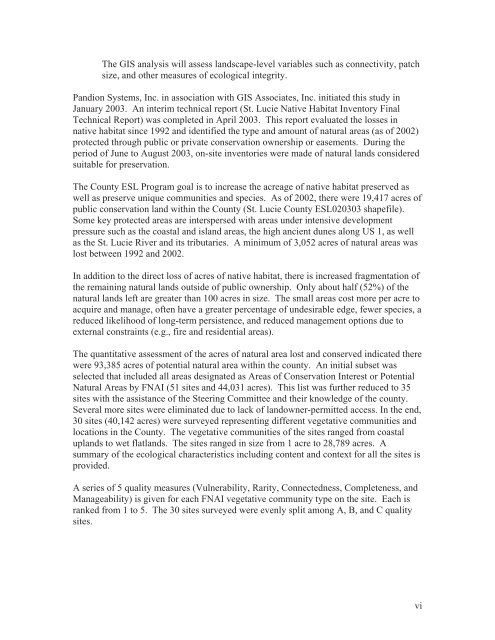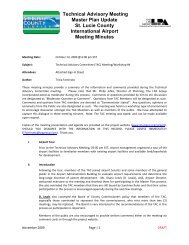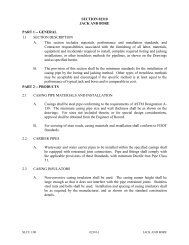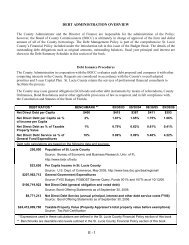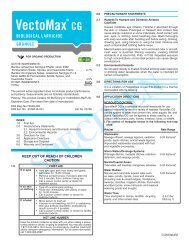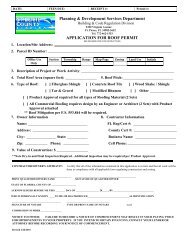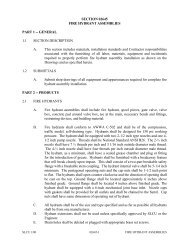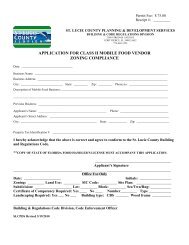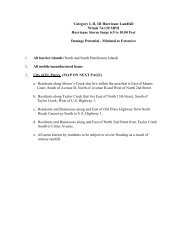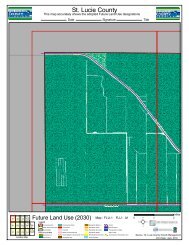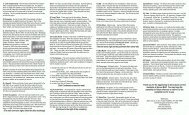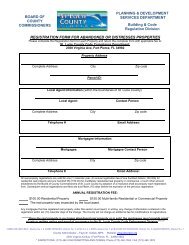Native Habitat Inventory Final Report 2004 - St. Lucie County
Native Habitat Inventory Final Report 2004 - St. Lucie County
Native Habitat Inventory Final Report 2004 - St. Lucie County
Create successful ePaper yourself
Turn your PDF publications into a flip-book with our unique Google optimized e-Paper software.
The GIS analysis will assess landscape-level variables such as connectivity, patch<br />
size, and other measures of ecological integrity.<br />
Pandion Systems, Inc. in association with GIS Associates, Inc. initiated this study in<br />
January 2003. An interim technical report (<strong>St</strong>. <strong>Lucie</strong> <strong>Native</strong> <strong>Habitat</strong> <strong>Inventory</strong> <strong>Final</strong><br />
Technical <strong>Report</strong>) was completed in April 2003. This report evaluated the losses in<br />
native habitat since 1992 and identified the type and amount of natural areas (as of 2002)<br />
protected through public or private conservation ownership or easements. During the<br />
period of June to August 2003, on-site inventories were made of natural lands considered<br />
suitable for preservation.<br />
The <strong>County</strong> ESL Program goal is to increase the acreage of native habitat preserved as<br />
well as preserve unique communities and species. As of 2002, there were 19,417 acres of<br />
public conservation land within the <strong>County</strong> (<strong>St</strong>. <strong>Lucie</strong> <strong>County</strong> ESL020303 shapefile).<br />
Some key protected areas are interspersed with areas under intensive development<br />
pressure such as the coastal and island areas, the high ancient dunes along US 1, as well<br />
as the <strong>St</strong>. <strong>Lucie</strong> River and its tributaries. A minimum of 3,052 acres of natural areas was<br />
lost between 1992 and 2002.<br />
In addition to the direct loss of acres of native habitat, there is increased fragmentation of<br />
the remaining natural lands outside of public ownership. Only about half (52%) of the<br />
natural lands left are greater than 100 acres in size. The small areas cost more per acre to<br />
acquire and manage, often have a greater percentage of undesirable edge, fewer species, a<br />
reduced likelihood of long-term persistence, and reduced management options due to<br />
external constraints (e.g., fire and residential areas).<br />
The quantitative assessment of the acres of natural area lost and conserved indicated there<br />
were 93,385 acres of potential natural area within the county. An initial subset was<br />
selected that included all areas designated as Areas of Conservation Interest or Potential<br />
Natural Areas by FNAI (51 sites and 44,031 acres). This list was further reduced to 35<br />
sites with the assistance of the <strong>St</strong>eering Committee and their knowledge of the county.<br />
Several more sites were eliminated due to lack of landowner-permitted access. In the end,<br />
30 sites (40,142 acres) were surveyed representing different vegetative communities and<br />
locations in the <strong>County</strong>. The vegetative communities of the sites ranged from coastal<br />
uplands to wet flatlands. The sites ranged in size from 1 acre to 28,789 acres. A<br />
summary of the ecological characteristics including content and context for all the sites is<br />
provided.<br />
A series of 5 quality measures (Vulnerability, Rarity, Connectedness, Completeness, and<br />
Manageability) is given for each FNAI vegetative community type on the site. Each is<br />
ranked from 1 to 5. The 30 sites surveyed were evenly split among A, B, and C quality<br />
sites.<br />
vi


